 Just a quick prayer request: We are at a bit of low point in terms of our Spanish acquisition. We believe that we have just hit one of those plateaus where we haven’t seen as much practical results recently so we have felt a bit discouraged. Thankfully some of our good missionary friends here were able to come along side of us and encourage us and give us some practical advice. But we do appreciate your prayers for us in regards to Spanish at this time.
Just a quick prayer request: We are at a bit of low point in terms of our Spanish acquisition. We believe that we have just hit one of those plateaus where we haven’t seen as much practical results recently so we have felt a bit discouraged. Thankfully some of our good missionary friends here were able to come along side of us and encourage us and give us some practical advice. But we do appreciate your prayers for us in regards to Spanish at this time.
Prayer Request
Are you suffering?
And he said, “The Son of Man must suffer many things and be rejected by the elders, chief priests and teachers of the law, and he must be killed and on the third day be raised to life. THEN HE SAID to them all: “If anyone would come after me, he must deny himself and take up his cross daily and follow me.” (Luke 9:22-23)
Cross-bearing is a powerful ancient image. Rejection stood at the center of that image, as well as accountability to the state. The cross-bearer had committed a severe crime and needed elimination. Criminals bore their own crosses as they journeyed to their death. Thus for a Christian to bear a cross is to be prepared to face rejection and death, even as one remains accountable to God for the path one walks. It means that one has died to the world, separated from its values and lifestyle.
These texts are hard for us to reflect on today, because cross-bearing in the ancient sense of walking to one’s death rarely happens for most Christians today. Discipleship does not come with the almost automatic sense of cost it carried then. A decision for Jesus does not bring automatic rejection today. If anything, we suffer from an opposite issue. It is possible to operate in such a closed Christian circle that one lacks all contact with the outside world and thus misses the rejection of the world that this passage assumes will be present. One can experience a type of institutionalized Christianity that assumes one is born a believer or that stays so cloistered to protect one’s moral identity that one never really engages those in the world. Such a Christianity will never face the discipleship tensions Jesus describes here. But such a protected kind of discipleship is not what Jesus asks his followers to undertake when he calls them to bear their cross daily. Jesus assumes those who are his will indeed represent him in the world. He also knows the world will react. Yet even those who do undertake his mission faithfully today often do not face persecution that early Christians endured.
But to note that faith today often does not involve persecution does not mean that discipleship is without cost or ceases to exist. The world is just as potent and powerfully present today as it was then. The call for us to walk differently from the walk of the world is just as essential an attribute of discipleship today as it was then. A walk of integrity, purity, faithfulness, and humble service should be just as evident today as it was in Jesus’ day. If we are too comfortable in the world and if no one can tell our lives are different, it may be because we have not taken the full journey of discipleship Christ calls us to take. That does not mean that we should blow a trumpet to draw attention to our different way of living. It should emerge naturally, like lights shining in darkness.
Our walk with God is not something that takes place on “automatic pilot.” For many, Christianity is merely a guaranteed ticket to heaven. But Jesus never envisioned the faith as a “one-stop” experience. This section on following Jesus makes clear just how demanding discipleship is. It requires a whole new way of thinking and of orienting oneself to life. The path of following Jesus requires spiritual labor, the bearing of a cross daily. Jesus underscores the fact that to carry a cross one must deny the self. Agendas change when one comes after Jesus, since he has already marked out the path.
Denying oneself means different things in different contexts. To a parent, it means not just seeking one’s own desires, but serving the child in their best interests in terms of the investment of time and energy. To a spouse, it means not just asking what can be done for you, but considering how one can be of help to his or her partner. To a neighbor, it means considering how one can be of service and show concern in the affairs of life. To a colleague at work, it may mean not seeing how you can advance the responsibilities you have to undertake, but how you can be of service to them. Most importantly to God, it means seeking his will and spending time before him so he can lead and guide you in the way you should go. Discipleship means being a learner, a follower. It means that our attention is turned to how we can follow Jesus, not how we can make him follow us.
This means that we are seeking his kingdom, not our own. Materialism and the pursuit of power, independence, and security are probably the biggest obstacles to spiritual advancement. Everything in our culture from commercials to our education pushes us in the direction of advancing our standing of living for more comfort. To pick up a cross means walking against the grain of cultural values, so that our own expectations and needs take a back seat to God’s call. Some things we may have seen as ours by natural right may need to be renounced because they represent a subtle form of idolatry. The Spirit guides us into seeing things differently than we did before. Bearing a cross may mean leaving behind dreams created for us long ago by a citizenship we have now left behind.
So discipleship requires a renewal of the mind and a commitment of the heart to that renewal. It will mean intense involvement with God’s Word and with other believers who are dedicated to growing in their faith. A disciple is never stagnant and never has the spiritual life in a mode where God cannot challenge him or her to a deeper walk. As Jesus has noted, it is an offering of the self in service to the Son of Man.
So my question again is: are you suffering? Are you being discipled by God?
Bock, Darrell L. “Bridging Contexts” and “Contemporary Significance” In NIV Application Commentary, New Testament: Luke. By Darrell L. Bock, 267-268. Grand Rapids: Zondervan, © 1996.
Birthdays in September
We celebrated 3 Birthdays in September with a big Birthday Party on Tuesday evening. It’s was Caleb’s (the son of Henry and Olgita Burbano’s) first birthday and Chris and Jenny Hoskins both celebrated their birthdays this month. It was lots of fun!
Trip to Guayaquil
We had an awesome trip to the coastal city of Guayaquil this last weekend. Guayaquil is the largest city in Ecuador (yes… a little bit bigger than Quito) and is the country’s main port. It has a very different feel than Quito as it is much warmer there and has more of the coastal/beach type atmosphere.
Kim, Simeon and I traveled out there this weekend along with our colleague Josh Swenson, to visit our fellow missionary and only Long-Term Missionary in Ecuador, Cheryll Clark and her husband Moises. This trip was part of our country orientation in that we are supposed to go around and visit the different ministry locations in Ecuador to learn and understand about the ministries. Cheryl and Moises co-pastor a church there in Quayaquil. We had an awesome time visiting and learning all about the coast and the ministies there. Here are some pictures:
Computer Update
 We hadn’t updated you all but our computer is all fixed. A new missionary to the field was gracious enough to be able to bring a part down from the states from HP and we were able to get it fixed. In addition to this, during our time of being offline, we received a donation from a supporter to buy a second little (“Mini”) laptop to have for backup purposes as well as when/if one of us travels, so the other person won’t be without. Thank you all for your prayers and support with this prayer request! It’s good to be back online!!!
We hadn’t updated you all but our computer is all fixed. A new missionary to the field was gracious enough to be able to bring a part down from the states from HP and we were able to get it fixed. In addition to this, during our time of being offline, we received a donation from a supporter to buy a second little (“Mini”) laptop to have for backup purposes as well as when/if one of us travels, so the other person won’t be without. Thank you all for your prayers and support with this prayer request! It’s good to be back online!!!
Trip to the Basilica
We were able to weave some of the culture of Quito into our Spanish lessons today. We first went to a museum and learned and saw a lot of history from Ecuador dating back to ‘before Christ”. Unfortunately we couldn’t take pictures, so sorry.
We then we able to go to the Basilica in Quito which was built in 1930. We had the opportunity to climb to the top, yes the TOP of the towers in the Basilica, all the way up to the Belfry and beyond. It was quite the experience! Although we took many pictures like the ones below, we should have taken pictures of the ‘steps’ we took to get to the top. Most were basically a ladder! I (Kim) am not really afraid of heights, but I was pretty nervous! We had a great time! Enjoy the pictures!
Simeon having a laugh!
We haven’t posted any updates on Simeon recently, so we should definitely do that. He is now eating solids and his sleep is adjusting to Ecuador. He usually only wakes up once to eat. Feel free to take a look at the video to see how he’s doing.
[youtube id=”KhA255CY-zs”]
First Newsletter Released!
Newsletter_September_2010
Our first newsletter is available for download (Just click the link above!). See what’s been happening with us in our first couple of months in Ecuador. Also, please note the address for Covenant World Mission has changed. If you are sending checks, please send them to:
Covenant World Mission
Joel & Kim Delp STM Support
8303 W. Higgins Rd.
Chicago, IL 60631-2941
Good Times!
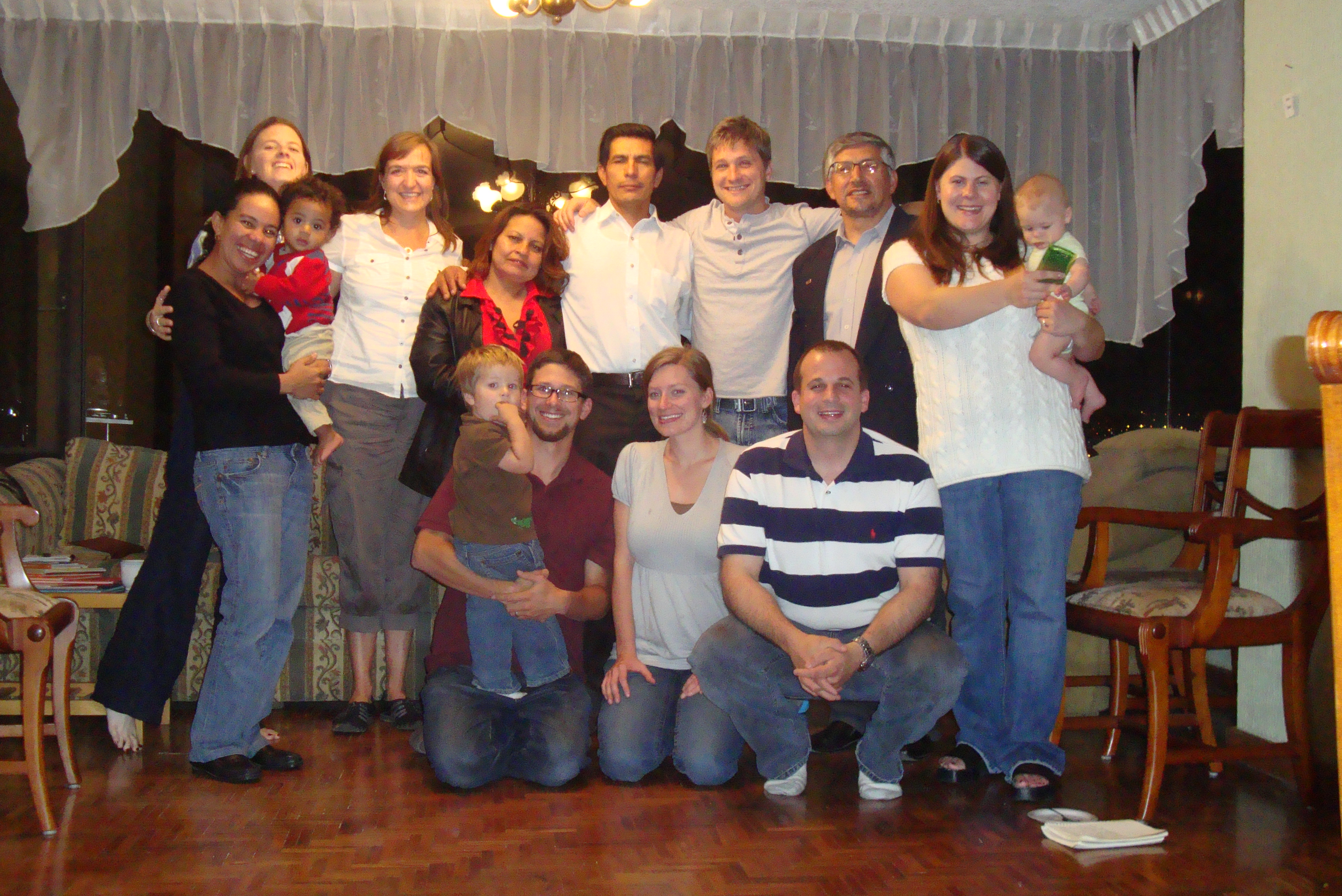 Tonight we had leadership from IPEE (the Covenant Church of Ecuador) as well as friends from Covenant World Mission headquarters in Chicago plus our missionary team (minus one from the Coast). It was a great time of prayer, dreaming and great communication for the future of the ministry in Ecuador. It is such an exciting time to be here and we feel God is really moving! We are very grateful and blessed to be a part of it!
Tonight we had leadership from IPEE (the Covenant Church of Ecuador) as well as friends from Covenant World Mission headquarters in Chicago plus our missionary team (minus one from the Coast). It was a great time of prayer, dreaming and great communication for the future of the ministry in Ecuador. It is such an exciting time to be here and we feel God is really moving! We are very grateful and blessed to be a part of it!
Currently experiencing technical difficulties…
 We just needed to let you know that we are currently experiencing technical difficulties, as the saying goes. Our laptop (and only computer) is falling apart and though we bought it only 6 months ago, HP doesn’t want to help us out. We are just wanting to let you know so that you can pray for us and the situation as this is our main lifeline to all of you and people in the States. Also, we just wanted to make you aware so you know why you aren’t seeing us on Facebook, Skype, email, here, etc. God bless!
We just needed to let you know that we are currently experiencing technical difficulties, as the saying goes. Our laptop (and only computer) is falling apart and though we bought it only 6 months ago, HP doesn’t want to help us out. We are just wanting to let you know so that you can pray for us and the situation as this is our main lifeline to all of you and people in the States. Also, we just wanted to make you aware so you know why you aren’t seeing us on Facebook, Skype, email, here, etc. God bless!




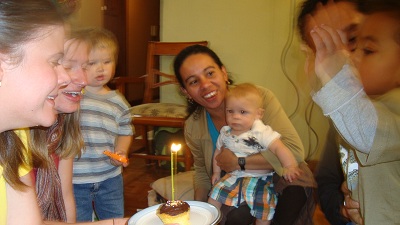

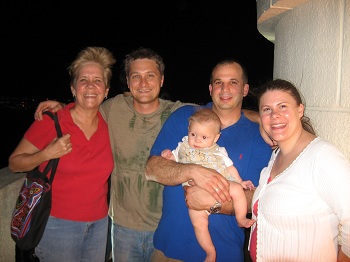


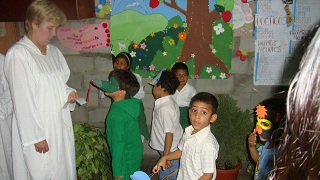

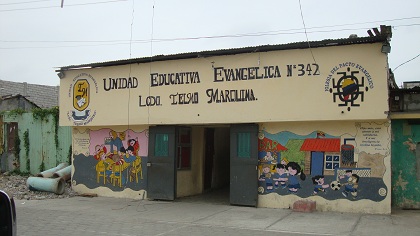
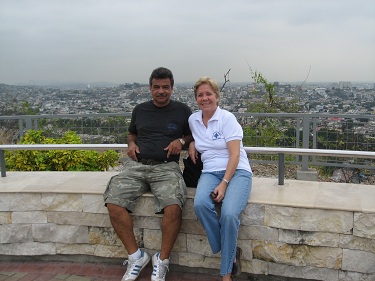







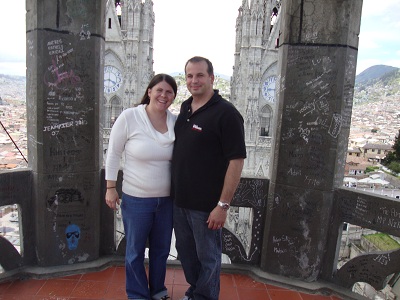




 The Santiago Partnership
The Santiago Partnership